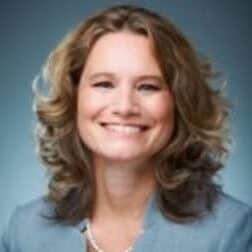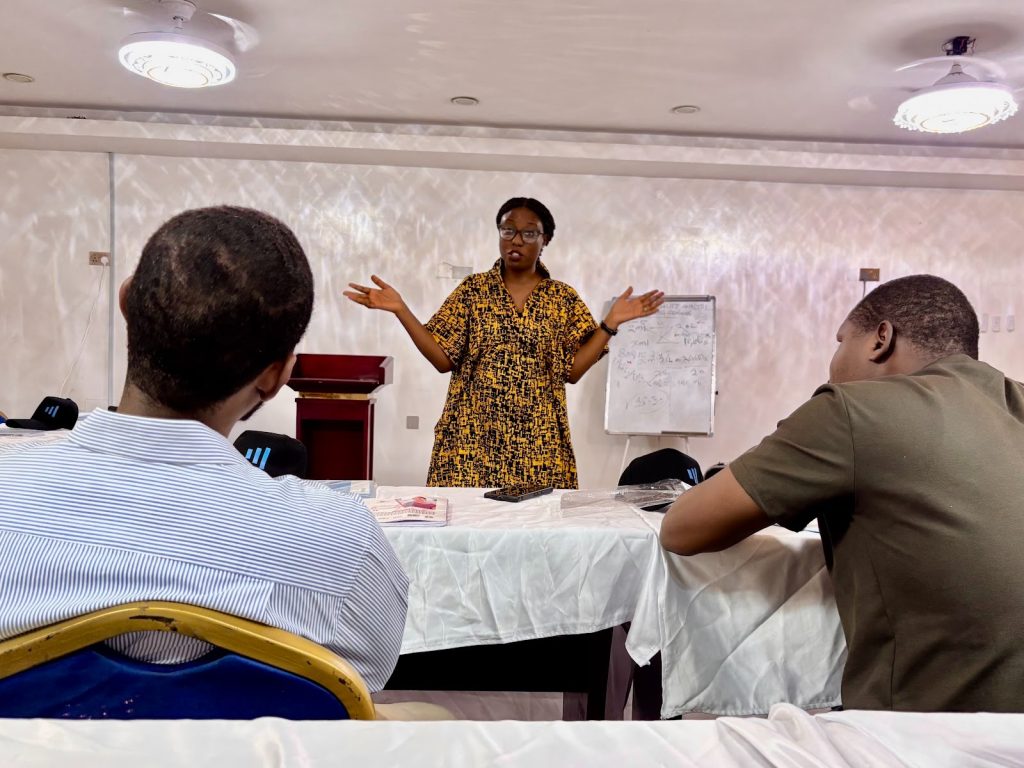Promoting Cross-Border Connectivity In An Era Of Payments Fragmentation
A host of enhancements to cross-border payments are promising to enrich the global payments landscape. But implementing change within this complex industry isn’t straightforward.
In today’s instant, interconnected world, a crucial juncture has been reached in cross-border payments. Businesses and consumers – increasingly frustrated with inadequate, inefficient legacy international payment processes – are demanding fast, transparent and low-cost services from their providers. And the need for the industry to deliver is becoming ever-more pressing.
Initiatives are progressing at pace to help facilitate the move to seamless, 24/7 real-time global payments. The aim is to effectively replicate the same client experience that has become easily accessible in the domestic payments space. But change of this scale comes with challenges, and a by-product of the race to deliver real-time cross-border payments is a landscape inundated with different concepts and services, with fragmentation exacerbated by individual countries’ unique sets of payments rules and regulations.
Internationally, initiatives such as the G20 Roadmap for Enhancing Cross-Border Payments, which sets out quantitative targets to help make cross-border payments cheaper, faster, more transparent and accessible by 2027, have catalysed industry-wide efforts to promote greater standardization, legal and regulatory harmonization and payment system interoperability1. Certainly, as the industry edges closer to enhanced cross-border payments, there must be a focus not only on enablement, but standardization to tackle the fragmentation head-on, while also ensuring security and client satisfaction are maximized.
The challenging world of cross-border payments
Moving funds internationally is a complex undertaking, involving multiple parties, navigating time zones and adhering to regulatory requirements of each jurisdiction. This makes the process slow and convoluted, with high costs for both sender and receiver, and a lack of transparency regarding payment status and the associated fees. Given this, it is unsurprising that global payments have become a pain point for clients – and indeed their banking partners. Financial institutions (FIs) are only too aware of the impact of legacy processes on client service, and the very real need to implement enhanced processes to get global payments up to speed – literally – with the demands of the 21st century.
As banks resolve to deliver cutting-edge cross-border payments, they face legacy platform challenges, a lack of real-time infrastructure, and innovation hobbled by regulatory constraints. Against this backdrop, banks must also contend with an increasingly competitive landscape. Inventive, nimble non-bank players with a global presence have thrown their hats into the cross-border payments ring to deliver non-traditional approaches to solve the high cost and obscurity problem. By creating alternative payment networks, fintechs are providing a user experience that many banks are currently unable to match when it comes to speed, transparency and cost.
As FIs seek to overcome these obstacles and provide clients with flexible, instant cross-border payments, aligning with the pillars of the G20 Roadmap is essential for supporting a uniform global payments ecosystem and enabling banks to progress effectively towards the cross-border end goal. Designed to promote faster acceleration of global instant payments, it is invaluable to helping the banking industry most effectively chart a path to a coherent, consistent future.
Fusing the old and the new: combining legacy low-value rails with instant clearing
A key approach the industry is adopting will enhance existing infrastructure, with an emphasis on improving speed and visibility. Banks are readily implementing new industry initiatives – such as those provided by Swift – and other new technologies and processes to meet the needs of their global clients.
For example, by standardizing correspondent banking payment reporting under uniform rules, Swift gpi provides real-time, end-to-end tracking and transparency for cross-border payments. This has subsequently contributed to reduced overall end-to-end processing times, and therefore a better service for clients. Building on the success of Swift gpi, Swift Go standardizes correspondent banking relationships under uniform service level agreements. This enables similar capabilities for the low-value payment space – facilitating more efficient delivery channels such as ACH and instant payments, rather than funds transfers only.
Complementing these developments, financial institutions are embracing interoperability, alternative payment rails, and smart foreign exchange (FX) services to reduce costs and enhance service delivery. BNY’s Swift to ACH initiative allows financial institutions to initiate cross-border payments via ISO 20022 pacs.008 messages and deliver them through the domestic US ACH rail – a lower-cost alternative to traditional USD wire transfers. Beneficiaries receive the full amount by the next day, while originators benefit from reduced transaction costs and the ability to provide a predictable client experience. This service is part of a suite of Low Value Payment resources that include offering FX conversions into a wide range of local currencies for delivery over low-cost payment rails – helping institutions lower costs and stay competitive with fintech offerings. BNY’s extensive correspondent banking network, along with strategic collaborations with fintechs and other service providers, empower us to broaden our offering to deliver a wider range of service beyond conventional financial services.
The combination of industry and proprietary initiatives are helping banks to expand their global payments value propositions and deliver the quality of service that clients are seeking – without the need for prohibitively expensive investment in new infrastructure. Banks are becoming truly competitive in today’s cross-border payments space.
Standing on solid ground: foundations for consistency
The next step is to enable interoperability and connectivity between different payments systems and platforms by aligning compliance and regulatory requirements across jurisdictions. This requires governments, network operators, banks, and industry bodies to move in the same direction, adopt common standards, and create uniform processes for exception management. Encouragingly, progress is already underway across several regions.
This is being addressed in Europe through the EPC’s One-Leg Out Instant Credit Transfer (OCT Inst) scheme, which enables payment service providers (PSPs) to leverage existing Single Euro Payments Area (SEPA) payment rails – including procedures, features, and standards – to facilitate cross-border payments that have one euro leg inside and one leg outside SEPA. For example, in November 2024 EBA CLEARING went live with an OCT Inst Service for RT1, its pan-European, real-time payment processing system for instant credit transfers2.
A similar approach is being adopted in other markets to enable cross-border interoperability using existing domestic rails. One notable example is BNY’s partnership with the Commonwealth Bank of Australia (CBA). Through our correspondent banking relationship, BNY clients can now send real-time payments to Australia 24/7, 365 days a year. This has been made possible by a new feature within the New Payments Platform (NPP), Australia’s real-time payments system. The International Payments Service (IPS) allows the Australian dollar component of inbound cross-border payments to be processed instantly. Previously, international transactions could only be settled via traditional funds transfers. Now, CBA can settle and clear payments on BNY’s behalf 24/7, with beneficiaries able to access funds in as little as 60 seconds – regardless of the sender’s location. With a network of over 2,000 correspondent banks across the globe, BNY is replicating this process with partner banks in other countries as other jurisdictions adopt an international framework within their instant payment schemes.
Elsewhere, the US-Mexico-Canada agreement (USMCA) has been established to enhance cross-border payments between the three countries. As part of the strategy, input from fintechs is being encouraged to share skillsets and develop optimized processes.
Certainly, fintechs and emerging technologies have a role to play in shaping global payments. Blockchain-based services for continuous settlement on a single ledger are emerging as alternatives to correspondent banking. Several markets are increasingly selecting digital wallets as a preferred service option.
Combined, these infrastructure developments may allow global payments to occur at any time, without being limited by business hours, time zones, or working days. This could result in greater cash flow visibility, more efficient supplier management, and improved liquidity control for businesses. Overall, real-time payments have increased flexibility in managing liquidity.
Piecing together the payments puzzle
While the industry unites to create a more standardized environment there will, however, inevitably continue to be different schemes in different markets, all with their own unique models, rules and Service Level Agreements. Banks should consider their target markets and integration with relevant initiatives to effectively meet clients’ international payment needs.
Banks then must provide a one-stop shop for global payments that allows clients to move money fast, anywhere, and anytime with ease. Indeed, with complexity and fragmentation rife, it is the ability to offer a simple, effective experience that will provide the greatest value.
At the same time, the industry must work towards integrating common values and infrastructure within initiatives such as ‘one-leg-out’ settlement, digital wallets and correspondent banking models, to enable the global payments ecosystem as a whole to function seamlessly. In this respect, the G20 Roadmap should be regarded almost as a North Star, guiding the industry towards alignment by following its principles. Doing so will help to instil a common infrastructure framework, centered on standardized rules and principles around 24/7 availability, transparency, finality, fraud prevention, and a common messaging standard.
While fragmentation continues to exist within cross-border infrastructure, building solid foundations and promoting collaboration will champion future solidarity, manage markets holistically for a truly global solution, and map the path for future connectivity.

Joanne Strobel-Cort, Managing Director, Head of International Payments Products Treasury Services | BNY
About The Author
Joanne Strobel-Cort is Head of International Payments Products at BNY, steering strategy, development, and execution of global payments solutions. With over 30 years’ experience, Joanne has held senior roles at Wells Fargo—leading segment solutions, technical sales and network management—and served as Head of Payables Products at Citizens Bank, with prior transaction banking positions at Deutsche Bank, ABN AMRO and Citibank. An industry authority, she has participated in SWIFT councils, chaired CHIPS and BAFT committees, spoken at SIBOS and published articles on cross-border payments.



